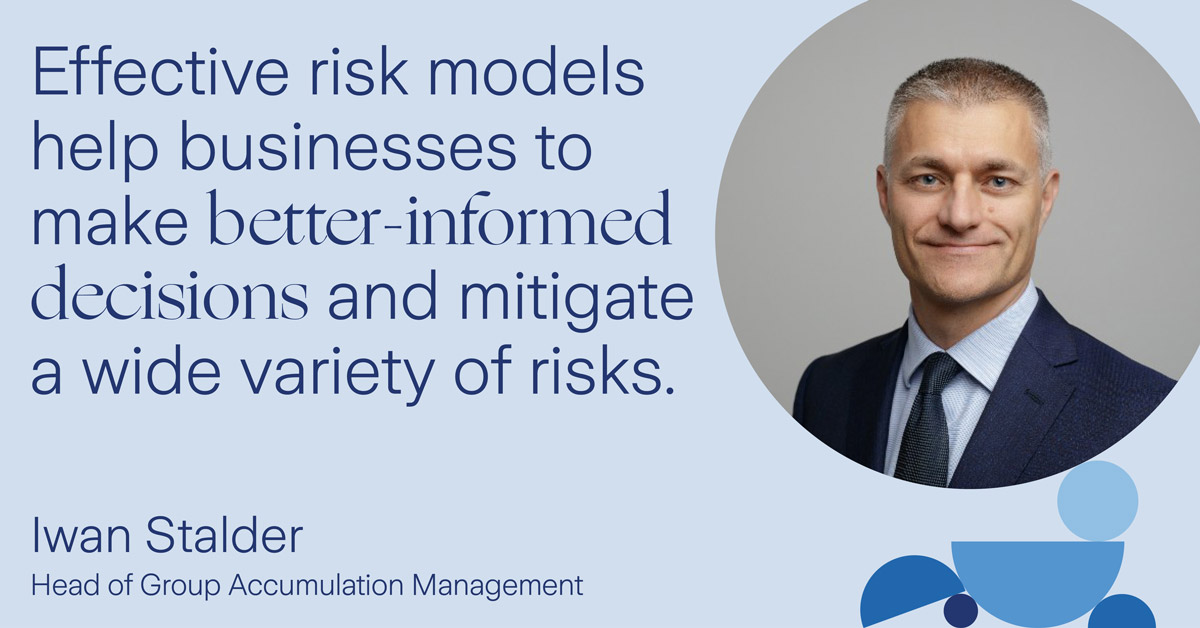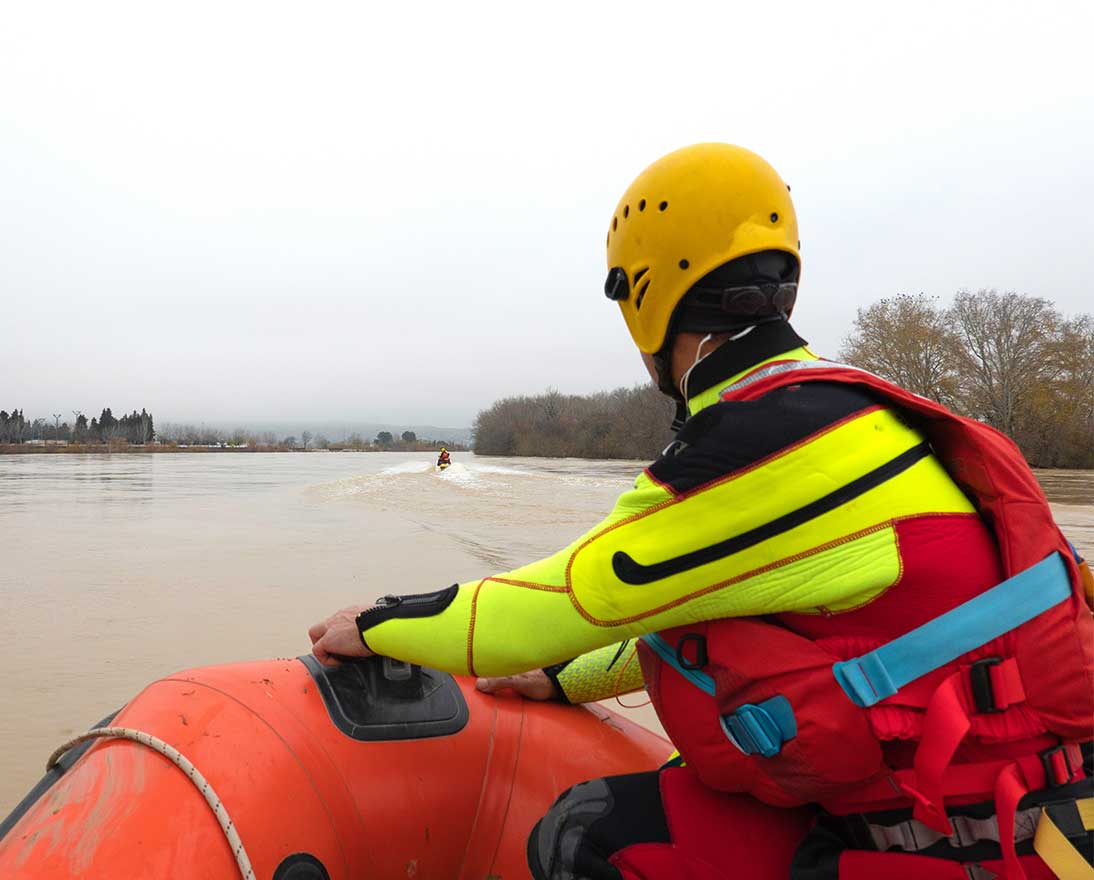How risk modeling can help your business prepare for the impacts of climate change
Climate resilienceArticleJuly 24, 20237 min read
Climate change is creating complex challenges for businesses everywhere. Here’s how risk models, and the experts who build and analyze them, can help your business make better decisions in the face of uncertainty.
Ever since humans first became aware of time and created a concept of ‘the future’, we have wanted to know what is going to happen next. Painting a complete and infallible picture of the future is impossible, of course. But in recent years our powers of predicting the likelihood and impact of future events have grown significantly. The technical term for this complex and fascinating science of forecasting is risk modeling.
What is risk modeling?
A risk model is a mathematical representation of a system that allows us to predict and analyze its potential future outcomes. Models use both historic data and the insights of human experts to estimate the likelihood and impact of risk events to which a system is exposed, using what are known as probability distributions.
Risk models also convert different types of risk into a common currency or metric of potential loss. This allows modelers to compare risks across different categories, perils and geographical regions in a consistent and therefore useful way.
Effective risk models help businesses to make better-informed decisions and thereby mitigate a wide variety of risks, including those related to financial markets, operations, compliance, geopolitical threats and climate change. They can also be valuable to governments, who in addition to the models developed by academia, use risk models developed by insurers to guide public sector investment decisions in climate adaptation and resilience. Yet despite their growing utility, risk models do come with a caveat: they never give perfect answers. Models are simplifications by design and an effective risk model should be validated and updated regularly so that it remains fit for purpose over time.
Scenario modeling vs stochastic modeling
Risk models are as varied as the potential threats they are designed to analyze but they frequently take one of two approaches:
Scenario models are used by risk analysts to create and interrogate tangible ‘what if?’ situations. For example, following the outbreak of the COVID-19 virus, experts at Zurich Insurance Group modelled potential scenarios continuously during the pandemic. As more data about the virus became known, these models could be updated to reflect the latest insights about the rate of infection, the effectiveness of vaccines and other variables. Scenario models are relatively simple in that they’re generally not aiming to estimate the probability that a risk event will occur. They are solely concerned with what could happen next if it does.
In contrast, stochastic or probabilistic models are used to investigate the likelihood of a range of different events and outcomes which themselves depend on multiple variables. For example, a stochastic model designed to predict the potential impacts of large-scale flooding might include more than a million different scenarios within it to provide a detailed view of all the potential risks and outcomes at a more granular level.

Mapping the impacts of climate change
You don’t need to be an Earth scientist to appreciate that our planet’s climate is a hugely complex and chaotic system. This makes it very hard to model. The overall trend may be clear – average global temperatures are rising – but climate models still face significant and inherent uncertainties. These include the difficulty of knowing which scenario or scenarios to model in the first place (which largely depends on actions taken to tackle the climate crisis in the immediate future). Next, once a specific scenario has been chosen, it is still an enormously complicated task to anticipate all its potential effects and implications.
Indeed, trying to predict the future impact of climate change reveals a universal truth about risk modeling: our world is a dynamic rather than a static system. This means that even the most comprehensive historic environmental data cannot give us a complete picture of potential future outcomes. Climate models must therefore factor in assumptions and predictions made by environmental scientists, and even then, be periodically updated and improved as more data is collected.
The complexities of climate change also demand a variety of approaches. Climate models improve our understanding of climate behavior globally including for example temperature and humidity. Catastrophe or cat models zoom into a region to look in detail at risks related to specific extreme events, such as hurricanes, wildfires and flooding. For cat modelling, it’s important to consider both the likelihood and the impact of extreme events and so a different mathematical approach is required. When climate projections are made years or even decades into the future (the Intergovernmental Panel on Climate Change’s models look to the end of the century, more than 75 years from now), firm conclusions become even harder to draw.
It is also key for businesses to investigate the risks that climate change poses to them specifically. Too often, simplistic risk models focus on the potential hazards that climate change poses to societies and economies. Your business’s individual exposure and vulnerabilities to environmental hazards should also be considered.
The power of AI
Risk modeling has always involved the collection and analysis of data. What has changed in recent years is the volume and resolution of that data and the computing power available to process it. Thanks to these advances, risk modelers are now tackling many of the challenges of predicting climate risks using sophisticated AI and machine learning tools. At Zurich, these tools enable our modelers to make better use of existing data and to fill in the gaps by generating predictions and insights in areas where little or no concrete data or connections existed in the past. For example, we use AI neural networks to create global hazard maps for today’s and future climate. The AI networks generate these hazard maps by combining data from climate models with current hazard maps. Combining different data sets to create new risk insights in this way has been supercharged by the use of AI and machine learning.
Making better decisions
Respondents to the World Economic Forum’s 2023 Global Risks Perception Survey listed the following as the four most serious global risks over the next 10 years: failure to mitigate climate change; failure of climate-change adaption; natural disasters and extreme weather events; biodiversity loss and ecosystem collapse. In response to this daunting array of environmental threats, risk modeling is becoming an increasingly powerful tool to help businesses understand the specific climate-related risks their organizations face in both the medium and long term.
That said, it is crucial to remember that, despite their growing usefulness to insurers and other experts in risk, models can never eliminate uncertainty. Nor are they designed to replace good judgment, business acumen and common sense. But when they’re designed and implemented correctly, models do provide invaluable arguments and insights to help businesses manage the risks they face – and make smarter decisions about the future before it arrives.
Climate Resilience
Our Climate Resilience experts help you identify and manage climate risks, and prepare you for climate reporting.



